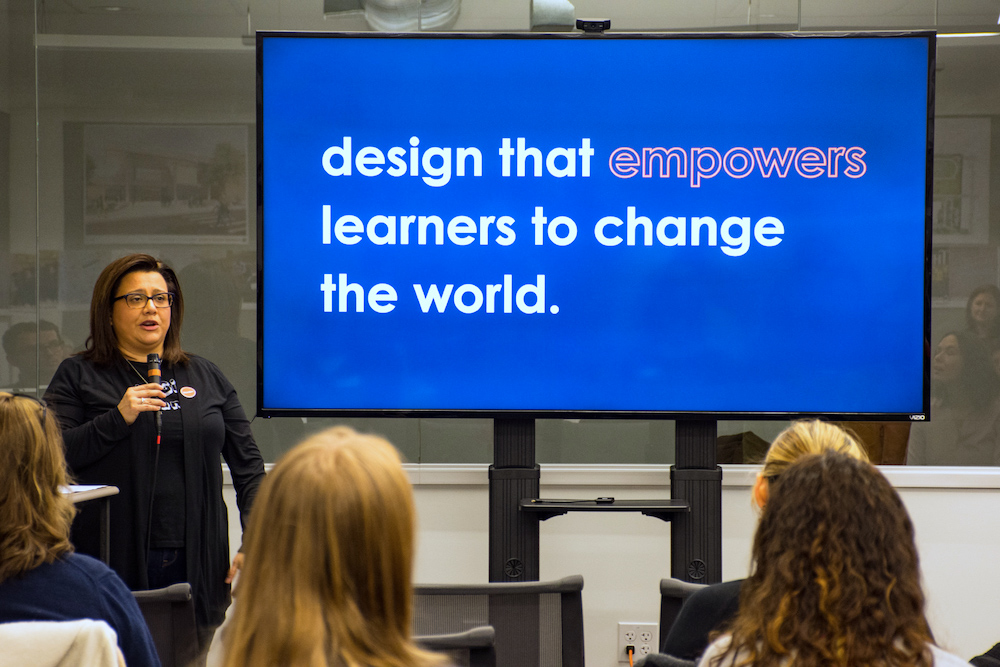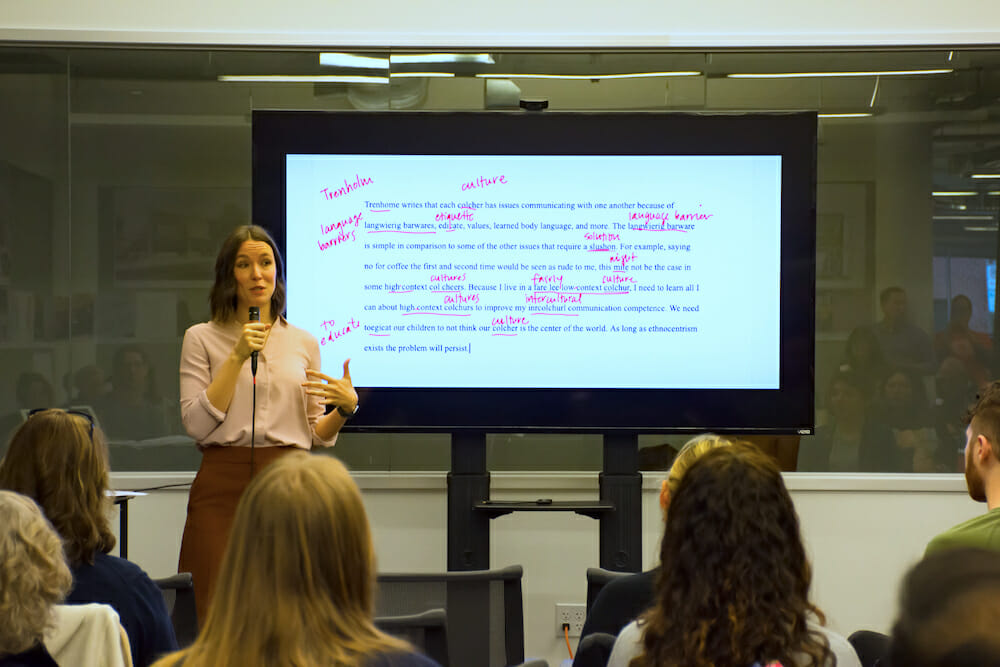Remaking the Grade Recap
Design Museum Mornings • January 2020
By Stephanie Harbin

At our January Design Museum Mornings event generously hosted by BRIC Architecture, we had the pleasure of hearing from Erin Briddick, communications professor at Portland Community College. Erin spoke about grading contracts—a potentially uncomfortable concept to students, teachers, and parents alike. We are all used to the rote world of teaching, homework, grading that a new approach can be hard to imagine.
Consider this, however: how many particular pet-peeves do you have? Which idiosyncrasies make us special and quirky, but also directly affect how we process information in certain contexts? Erin opened the discussion challenging us to think about these things. Imagine grading a paper and a student unknowingly is hitting the reader’s annoyance button repeatedly. Empirically, we have seen these subjective things directly affect standardized grades.
Objective grading can be difficult. Grading contracts exist to alleviate some of the subjectivity inherent to traditional methods. Ideally, teachers would acknowledge students for working hard and challenge those who are lacking effort to work harder. This is the fundamental basis of contract grading: to identify a true sense of the labor exerted and encourage improvement without necessarily attributing a numerical value to the effort. Generally, this means that the student enters into a contract with the teacher that states if they complete the assigned work to the best of their abilities, they are assured a certain grade. For Erin, this means a satisfactory grade would be “work done.” If refining is necessary, the student would receive a grade of “not yet” with feedback, requesting edits until she finds it is satisfactorily complete.

At its core, contract grading in practice is a series of conversations between students and teachers which delves into the learning process—how students are understanding and working with the material—in combination with the work they are producing. The other defining element is the level of feedback received by the student from the teacher, which is much higher than we would see in traditional grading practices. Ultimately, we are seeing educators who feel like their teaching is more focused and better aligned with their values, and students, who appreciate acknowledgment for their labor, spending more time learning on their own initiative as a result.
Erin added that many teachers feel grading as a pain point. Many cite how much time is spent trying to justify the numerical grade given, not even accounting for the time spent arriving at the assigned grade in the first place. Contract grading allows teachers to distill what matters in their grading rather than spending time to figure out how to amalgamate disparate elements into one telling number. Students benefit as well, citing less anxiety and reporting that they feel they are in touch with why grading as a construct should even matter—a reason many students don’t perform well under traditional grading systems. Contract grading takes us back to the essence of learning and teaching.
Erin closed her session with a discussion of hostile architecture. She spoke about architecture specifically designed to discourage use or keep people away, and how our education system is full of policies analogous to hostile architecture. We should be working to make learning more accessible, not less. With our partners at BRIC working diligently to create inclusive environments for learning to happen, this conversation couldn’t have taken place in a better place.
Special thanks to Erin Briddick for sharing her knowledge and experiences, and thank you again to BRIC for hosting CoDesign Collaborative in their beautiful space.
Works Referenced in Erin’s Presentation:
“Chinook Indian Nation – Cathlamet • Clatsop • Lower Chinook • Wahkaikum • Willapa.” Chinook Indian Nation, www.chinooknation.org/.
De Certeau, Michel. “Walking in the City.” The Practice of Everyday Life, University of Minnesota Press, 1998.
Deleuze, Gilles, and Félix Guattari. Nomadology: The War Machine. A.K. Press, 1994.
Elbow, Peter, and Jane Danielewicz. “A Unilateral Grading Contract to Improve Learning and Teaching.” College Composition and Communication, vol. 3, 2008. Retrieved from https://scholarworks.umass.edu/eng_faculty_pubs/3
Fine, Hunter H. “The Skateboard Dérive: A Poststructuralist Performance of Everyday Urban Motility.” Liminalities, vol. 9, no. 13, 2013.
Freire, Paulo. Education for Critical Consciousness. Sheed and Ward, 1990.
Gross, Allison. “Contract Grading.” Pacific Northwest Great Teaching Seminar, June 2019, Menucha Retreat and Conference Center, Corbett, Oregon.
Inoue, Asao. “Chair’s Address.” CCCC Annual Convention, March 2019, Pittsburgh, PA.
—. “A Grade-Less Writing Course That Focuses on Labor and Assessing.” First-Year Composition: From Theory to Practice. Ed. Deborah Coxwell-Teague and Ronald F. Lunsford. Parlor Press, 2014: 71-110.
Okun, Temo. ”The Characteristics of White Supremacy Culture.” Dismantling Racism: A Workbook for Social Change Groups, by Kenneth Jones and Temo Okun. Changework, 2001.
Schwab, Katharine. “How One Designer Fights Racism With Architecture.” Fast Company, 17 Aug. 2017. Accessed 17 Jan. 2020.
“Welcome to Cowlitz Country.” The Cowlitz Indian Tribe, www.cowlitz.org/.
Wood, J. Luke, et al. Teaching Men of Color in the Community College: a Guidebook. Montezuma Publishing, 2015.
